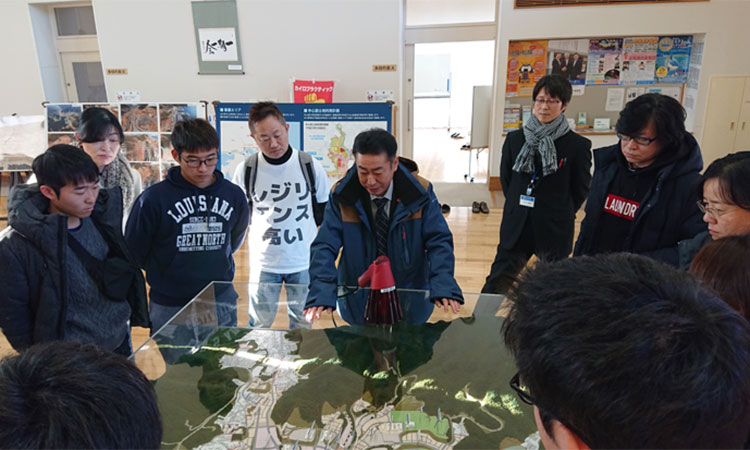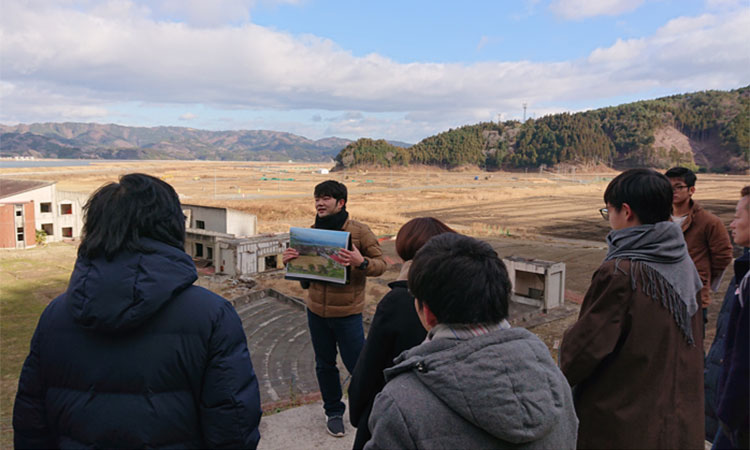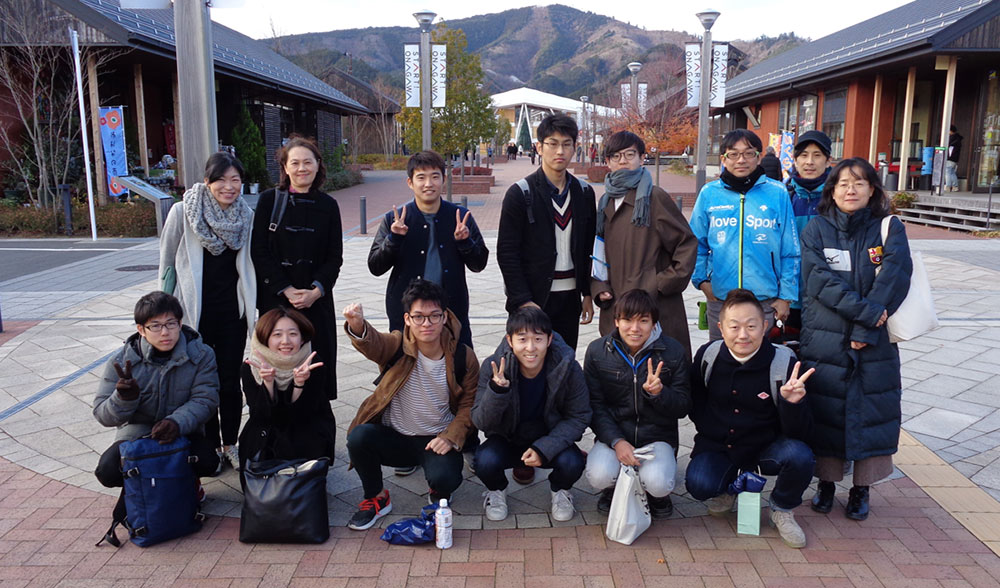ACTIVITY REPORTS
Report of the Tohoku fieldwork
2019.12.20
2019 EDGE-NEXT Common Infrastructure Project “Social Entrepreneurship Development Program for Leading Resilient Society”
Report of the Tohoku fieldwork
December 14-15, 2019: Onagawa Town, Ogatsu Town, Okawa Elementary School site
Contents: Refer to the guidebook
“Social Entrepreneurship Development Program for Leading Resilient Society” Working Group of Planning
Overview
Tohoku Fieldwork of the Ministry of Education, Culture, Sports, Science and Technology’s 2019 Common Infrastructure Project “Social Entrepreneurship Development Program Towards Resilient Society Building” was held on December 14-15, 2019 at Onagawa, Yukatsu, and Okawa Elementary School ruins. This fieldwork was positioned as an optional program for the Tohoku session (October 12-14), which was canceled due to the approach of Typhoon No. 19, and eight students from Tohoku University, Kobe University, and Shizuoka University participated.
The first day started with fieldwork in Onagawa Town. Mr. Aoyama, the director of the Social Partnership Office guided us around the center of the town. The design of town is designed not only to prepare for tsunami, but also to allow local residents to live with looking out to sea, which is the identity of the town. There are small ingenuities all around, and the students were greatly impressed by the combination of boldness and fineness of the grand design. Then, Mr. Doi, Principal of the Social Partnership Office, gave a lecture on the actual situation of public-private partnerships. He told us that there were stakeholders who worked hard for the reconstruction of town beyond the “public-private partnership”, and presented us with an ideal way of social entrepreneurship that drives the building of a resilience society. In the discussion after the lecture, there were many questions from the students especially about the activities of the administrative side, and the first day of the program was successfully completed.
On the second day, field work was carried out in the Okawa and Yukatsu areas. During the visit to the site of Okawa Elementary School, Mr. Naganuma, who is working in the narrator club and is also a disaster victim guided us. It took about an hour and a half to experience the evacuation at the hilltop behind the elementary school while listening to the explanation about the location, facilities and the situation of school at the time of the disaster. Students were given complex issue to ponder on the line between the preparation for natural disasters as an organization and individual judgments in times of emergency.
After that, we went towards Yukatsu by bus and spent about 30 minutes visiting the area around Okatsu Bay, where an 8-meter seawall was under construction. Yukatsu was also coastal area under the construction, but it was not as prosper as Onagawa Town. It is definitely not easy task to advance the reconstruction only with an ideal, and students are inspired to think about the way of self-help, co-help, and public-help based in reality.
Lastly, we went to Onagawa by bus and had a final review and free discussion over lunch. All the students shared what they had learned in two days.
Program development and operation for the next year
Through this Tohoku fieldwork, we reaffirmed that the Onagawa and Yukatsu areas are good cases showed the process of post-disaster reconstruction. In particular, Mr. Aoyama, Mr. Doi, and Mr. Naganuma at Okawa Social Partnership Office told us the real situation in detail as experiencers and practitioners. It is the most concentrate program throughout the entire schedule of Kobe, Tohoku, and Hokkaido. However, this field work was positioned as an optional program, so only eight students participated. In the next year, we would like to start the program from the Onagawa and Yukatsu areas.


